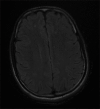Dissecting an Outbreak: A Clinico-epidemiological Study of Nipah Virus Infection in Kerala, India, 2018
- PMID: 32165798
- PMCID: PMC7045760
- DOI: 10.4103/jgid.jgid_4_19
Dissecting an Outbreak: A Clinico-epidemiological Study of Nipah Virus Infection in Kerala, India, 2018
Abstract
Background: An outbreak of Nipah virus infection was confirmed in Kerala, India in May 2018. Five out of 23 cases including the first laboratory-confirmed case were treated at Baby Memorial Hospital (BMH), Kozhikode. The study describes the clinical characteristics and epidemiology of the Nipah virus outbreak at Kozhikode during May 2018.
Objective: To study the clinical and epidemiological profile of Nipah virus epidemic that occurred in Kerala in May 2018.
Methods: A collaborative team of physicians and epidemiologists from BMH, Medical College Hospital (MCH) Kozhikode and from the Indian Medical Association (IMA) conducted this study. The clinical and exposure history and the data on outbreak response were gathered from hospital medical records and through interviewing patient relatives and health workers using questionnaires.
Results: It was identified that out of the 23 patients with Nipah virus infection, 21 (91.3%) expired. Out of the 21 patients, 18 tested positive for Nipah virus by Real Time polymerase chain reaction (RT-PCR). It has been found that only the index case was infected in the community from fruit bats. Rest of the cases were due to transmission of the virus at three public hospitals. Median age was 45 years. 65% of them were males. Median incubation period was 9.5 days. Fever (100%), altered sensorium (84.2%), tachycardia (63.1%), hypertension (36.8%), segmental myoclonus (15.7%), segmental sweating (15.7%) and shortness of breath (73.6%) were common features. Mean duration of illness was 6.4 days.
Conclusion: The rapid spread of infection uncovered the miserable state of health care system in implementing infection control measures. The case fatality and the socio-economic burden warrant developing appropriate treatments, vaccines and diagnostics.
Keywords: Acute respiratory distress syndrome; Nipah virus; Pteropus bats; encephalitis; henipavirus.
Copyright: © 2020 Journal of Global Infectious Diseases.
Conflict of interest statement
There are no conflicts of interest.
Figures





References
-
- Chua KB. Nipah virus outbreak in Malaysia. J Clin Virol. 2003;26:265–75. - PubMed
-
- Mohd Nor MN, Gan CH, Ong BL. Nipah virus infection of pigs in peninsular Malaysia. Rev Sci Tech. 2000;19:160–5. - PubMed
-
- International Centre for Diarrheal Disease Research, Bangladesh. Person-to-person transmission of Nipah virus during outbreak in Faridpur district. Health Sci Bull. 2004;2:5–9.
LinkOut - more resources
Full Text Sources
Miscellaneous

